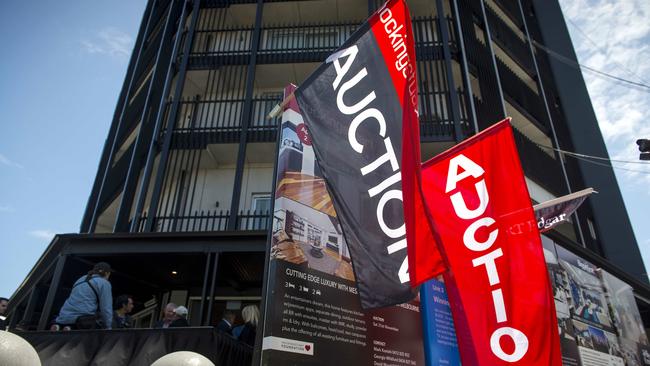Property slump hits state spending
Australia’s struggling property market threatens to slash state government revenues as states seek to fund new infrastructure.

Australia’s struggling property market threatens to slash state government revenues at the same time as major states seek to fund new infrastructure, putting their budgets under pressure, according to Moody’s Investors Service.
The gloomy outlook from the credit ratings agency came with a warning that state government debt levels remain elevated and could outpace revenue growth on the back of record capital spending programs.
“Debt levels remain elevated, and we expect debt will continue to rise more rapidly than revenue as most states embark on record capital spending programs,” Moody’s senior credit officer John Manning said.
His comments come after state government budget updates late last year revealed a $6.23 billion cut to stamp duty revenues forecast over the four-year period to 2022 amid fears the housing slowdown could deepen.
The NSW government endured writedowns to the tune of $2.5bn since its May budget, while Victoria had borne $2.4bn. Queensland and South Australia marked down stamp duties by $240 million and $106m, respectively, for the four-year budget period.
The worsening property slump is cutting into revenue projections as stamp duty receipts dry up from key apartment markets in Sydney and Melbourne, as well as Queensland, and home sales have also stalled.

Property research house CoreLogic said yesterday that capital city markets had seen an increase in auction activity, but a drop in clearance rates as vendors faced the weakest housing market since 2008.
The combined capital city clearance rates dropped to just 43.6 per cent in the last quarter of 2018, down from 53.6 per cent over the previous quarter and a far cry from 62.3 per cent in the last quarter of 2017.
The largest fall in clearance rates was in Canberra, which was down by 13.4 per cent from the previous quarter, followed by Adelaide with a fall of 12.2 per cent.
Perth suffered an 11.9 per cent dip and Melbourne was off by 11.2 per cent.
The weekly clearance rate touched a low of 40 per cent in mid-December and analysts have slashed their outlooks for this year. AMP Capital’s head of investment strategy and chief economist Shane Oliver last week warned house price falls in Sydney and Melbourne could exceed 20 per cent on average from their 2017 highs.
Morgan Stanley also said that house price declines had accelerated and the investment bank’s economists expect a 15-20 per cent peak to trough decline in real terms.
While state governments have revised their forecasts to take account of the weakening market, they will benefit from federal grants and GST related payments.
“Despite already projecting lower property-related revenue in their fiscal year 2019 budgets, the larger states of NSW and Victoria now forecast further declines in transfer duty and land tax revenue as a result of weakening residential property market prices and falling sales volumes,” Mr Manning said.
But revenue projections for both states increased overall, he said. “Both NSW and Victoria expect to receive additional commonwealth grant revenue to offset lower transfer duty revenue,” he said.
The mid-year reviews showed additional GST top-up payments are resulting in average revenue growth to 2.7 per cent of fiscal year 2019 through fiscal year 2022, compared to 2.6 per cent in the 2019 budgets.
But that revenue is likely to be partly offset by the lower stamp duty revenue.
Moody’s said it expects overall state government debt burdens to remain elevated over the next four years, increasing vulnerability to risks such as unbudgeted costs for health and education reform.
Population growth is an added pressure with the scope for capital spending to increase above the mid-year review forecasts in some states, the credit agency said.
Higher capital spending would, in turn, erode cash reserves and prompt them to issue additional debt, Moody’s predicted.



To join the conversation, please log in. Don't have an account? Register
Join the conversation, you are commenting as Logout